Abstract
Teenagers are a crucial target group for interventions concerning acquired immunodeficiency syndrome (AIDS) and human immunodeficiency virus (HIV). Experimenting with their burgeoning sexuality and increased ability to obtain drugs, they are prime candidates for AIDS prevention and education strategies. The intervention described in this paper is a 30-minute magic show, presented by Cyrus (or Iris) the Virus, a sinister but entertaining character portrayed by any health educator willing to spend a few hours learning the magic tricks. The tricks explain why sharing needles and choosing sexual partners based on appearance alone can result in AIDS. Cyrus also uses magic to communicate the ways that AIDS is not transmitted, how to refuse sex, and how to use condoms correctly. The show, as well as increasing the audience's knowledge about HIV, attempts to induce behavioral change by increasing participants' perceived self-efficacy--a predictor of healthful behavior. Still in its pilot phase, the show has been seen by 281 students ages 10-15 years. Viewers rate the show highly, and preliminary analysis suggests that perceived self-efficacy has been significantly improved.
Full text
PDF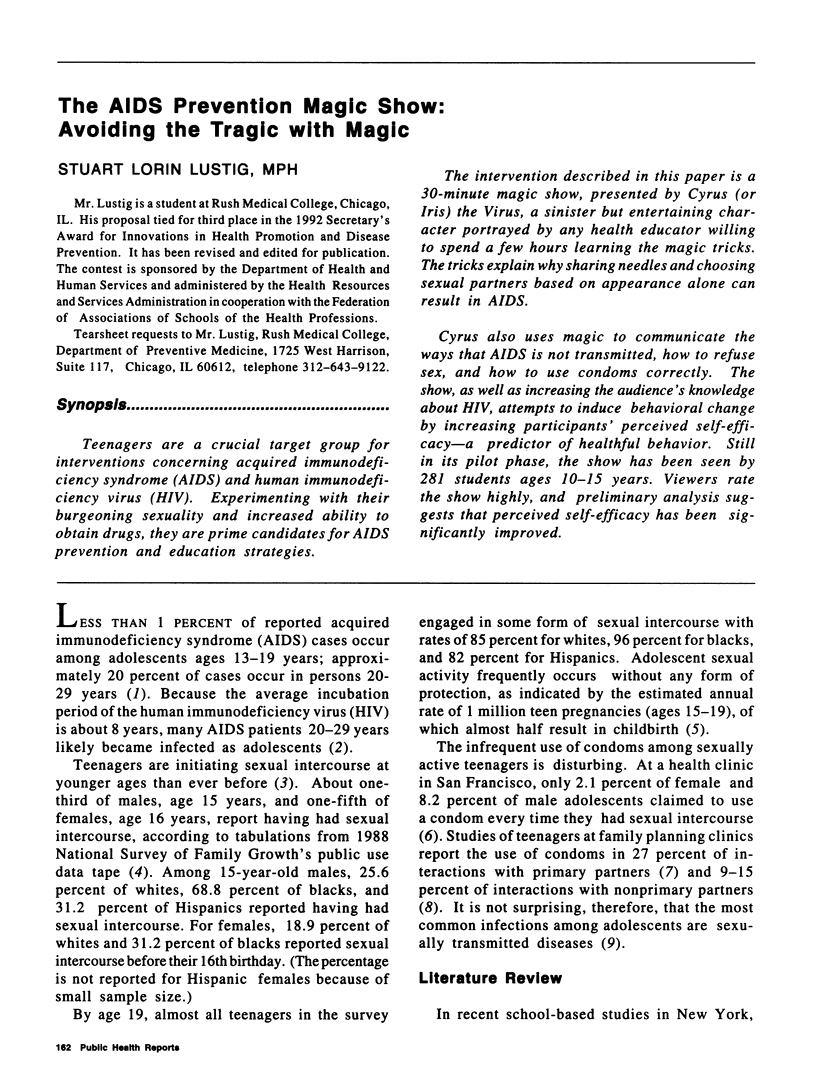
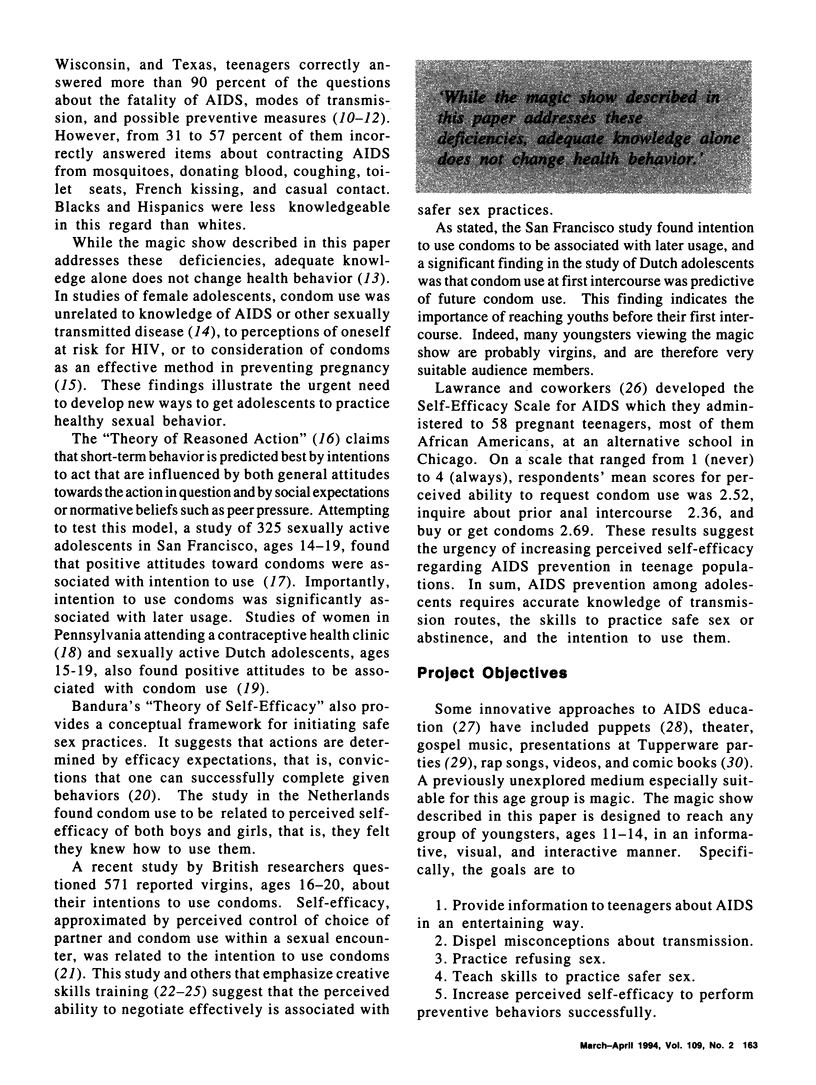

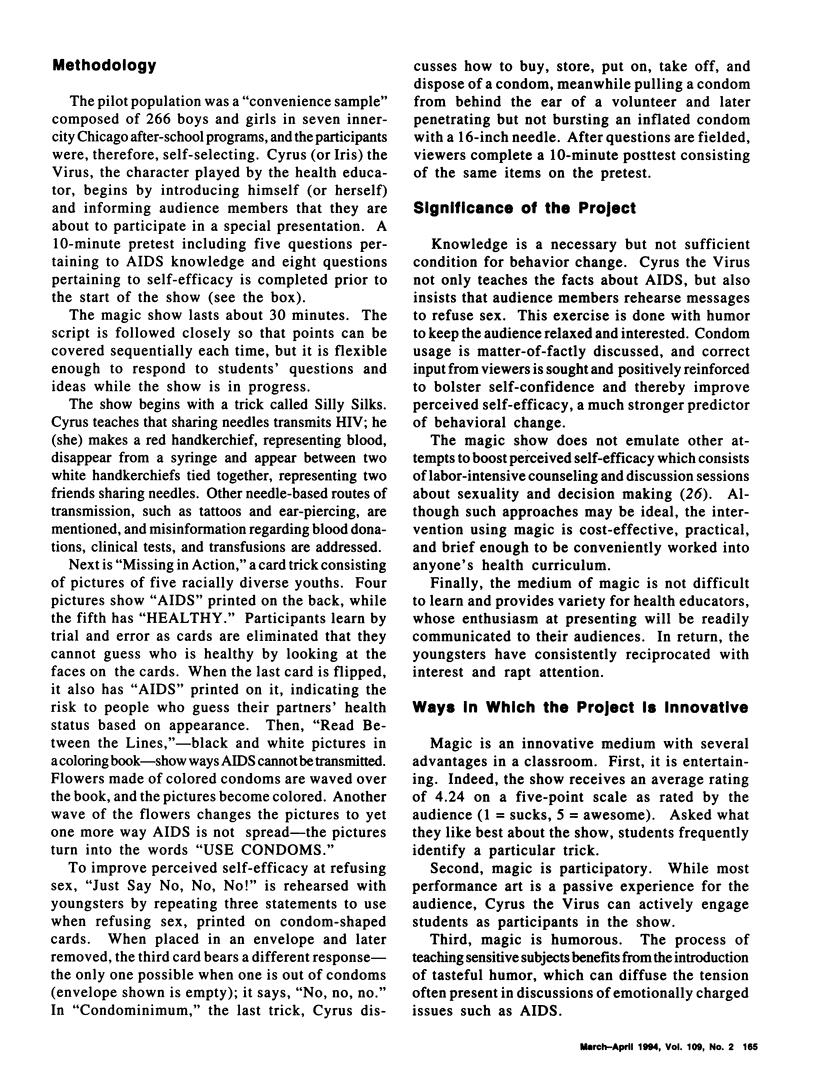
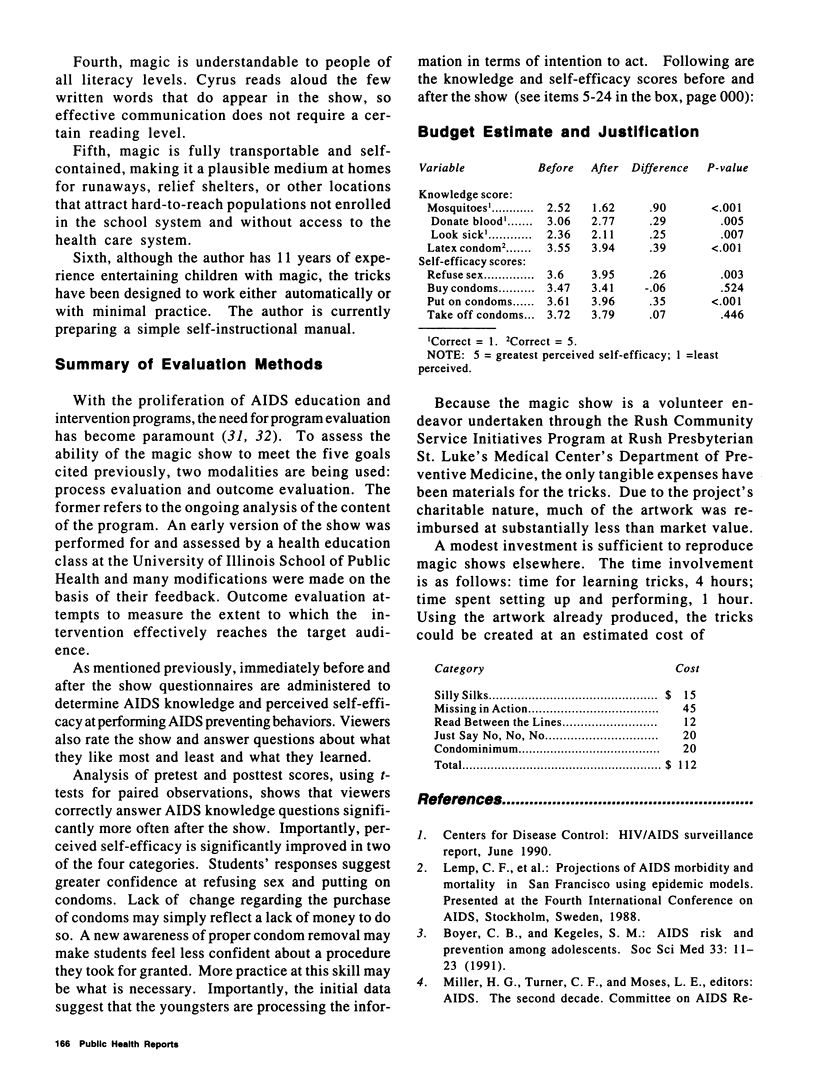
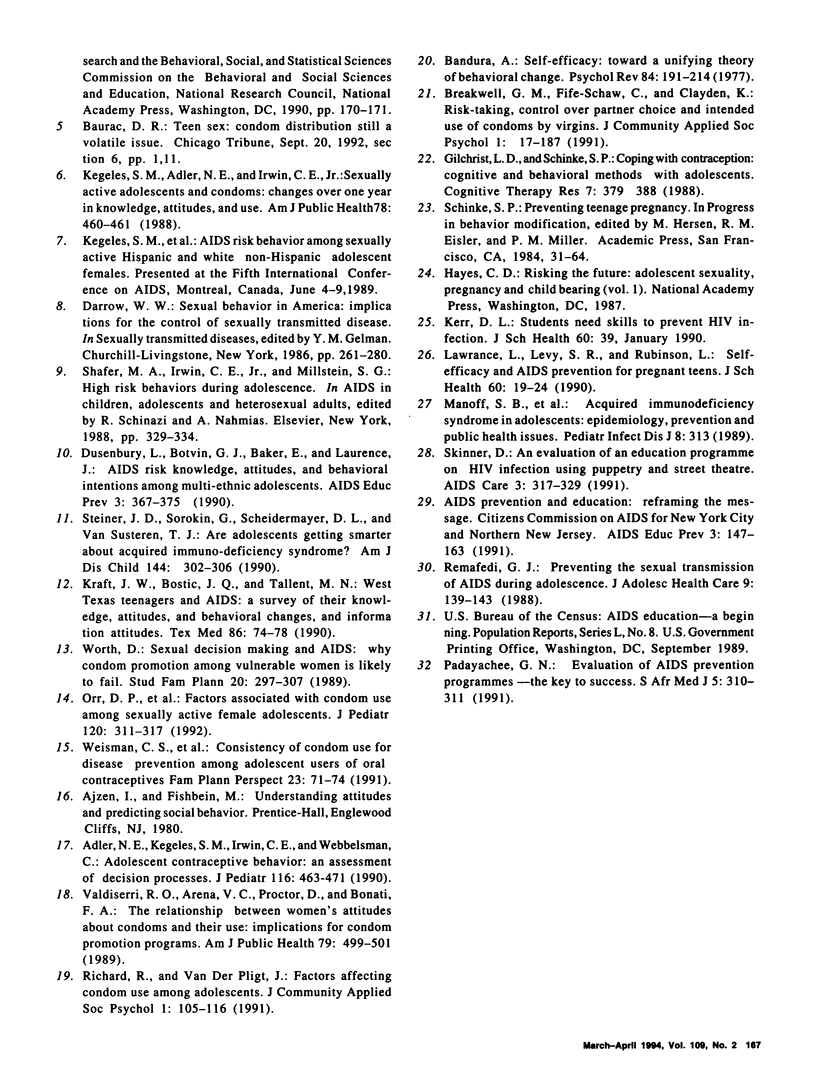
Selected References
These references are in PubMed. This may not be the complete list of references from this article.
- Adler N. E., Kegeles S. M., Irwin C. E., Jr, Wibbelsman C. Adolescent contraceptive behavior: an assessment of decision processes. J Pediatr. 1990 Mar;116(3):463–471. doi: 10.1016/s0022-3476(05)82845-8. [DOI] [PubMed] [Google Scholar]
- Bandura A. Self-efficacy: toward a unifying theory of behavioral change. Psychol Rev. 1977 Mar;84(2):191–215. doi: 10.1037//0033-295x.84.2.191. [DOI] [PubMed] [Google Scholar]
- Boyer C. B., Kegeles S. M. AIDS risk and prevention among adolescents. Soc Sci Med. 1991;33(1):11–23. doi: 10.1016/0277-9536(91)90446-j. [DOI] [PubMed] [Google Scholar]
- Dusenbury L., Botvin G. J., Baker E., Laurence J. AIDS risk knowledge, attitudes, and behavioral intentions among multi-ethnic adolescents. AIDS Educ Prev. 1991 Winter;3(4):367–375. [PubMed] [Google Scholar]
- Gilchrist L. D., Schinke S. P. Coping with contraception: cognitive and behavioral methods with adolescents. Cognit Ther Res. 1983;7(5):379–388. doi: 10.1007/BF01187166. [DOI] [PubMed] [Google Scholar]
- Kraft J. W., Bostic J. Q., Tallent M. K. West Texas teenagers and AIDS: a survey of their knowledge, attitudes, behavioral changes, and information sources. Tex Med. 1990 Sep;86(9):74–78. [PubMed] [Google Scholar]
- Lawrance L., Levy S. R., Rubinson L. Self-efficacy and AIDS prevention for pregnant teens. J Sch Health. 1990 Jan;60(1):19–24. doi: 10.1111/j.1746-1561.1990.tb04771.x. [DOI] [PubMed] [Google Scholar]
- Orr D. P., Langefeld C. D., Katz B. P., Caine V. A., Dias P., Blythe M., Jones R. B. Factors associated with condom use among sexually active female adolescents. J Pediatr. 1992 Feb;120(2 Pt 1):311–317. doi: 10.1016/s0022-3476(05)80453-6. [DOI] [PubMed] [Google Scholar]
- Padayachee G. N. Evaluation of AIDS prevention programmes--the key to success. S Afr Med J. 1991 Oct 5;80(7):310–311. [PubMed] [Google Scholar]
- Remafedi G. J. Preventing the sexual transmission of AIDS during adolescence. J Adolesc Health Care. 1988 Mar;9(2):139–143. doi: 10.1016/0197-0070(88)90060-5. [DOI] [PubMed] [Google Scholar]
- Skinner D., Metcalf C. A., Seager J. R., de Swardt J. S., Laubscher J. A. An evaluation of an education programme on HIV infection using puppetry and street theatre. AIDS Care. 1991;3(3):317–329. doi: 10.1080/09540129108253079. [DOI] [PubMed] [Google Scholar]
- Steiner J. D., Sorokin G., Schiedermayer D. L., Van Susteren T. J. Are adolescents getting smarter about acquired immunodeficiency syndrome? Changes in knowledge and attitude over the past 5 years. Am J Dis Child. 1990 Mar;144(3):302–306. doi: 10.1001/archpedi.1990.02150270052025. [DOI] [PubMed] [Google Scholar]
- Valdiserri R. O., Arena V. C., Proctor D., Bonati F. A. The relationship between women's attitudes about condoms and their use: implications for condom promotion programs. Am J Public Health. 1989 Apr;79(4):499–501. doi: 10.2105/ajph.79.4.499. [DOI] [PMC free article] [PubMed] [Google Scholar]
- Weisman C. S., Plichta S., Nathanson C. A., Ensminger M., Robinson J. C. Consistency of condom use for disease prevention among adolescent users of oral contraceptives. Fam Plann Perspect. 1991 Mar-Apr;23(2):71–74. [PubMed] [Google Scholar]
- Worth D. Sexual decision-making and AIDS: why condom promotion among vulnerable women is likely to fail. Stud Fam Plann. 1989 Nov-Dec;20(6 Pt 1):297–307. [PubMed] [Google Scholar]


